A Deep Dive into Fam Al Hut, the New Indie Sensation from China
An interview with the brand’s visionary co-founders, Xinyan Dai and Lukas Youn.

Fam Al Hut has quickly become one of the most talked-about independent watchmakers in the world, a rise underscored by their Möbius timepiece winning the prestigious Audacity Prize at the 25th Grand Prix d’Horlogerie de Genève (GPHG), otherwise known as the “Oscars of Watchmaking.” An accomplishment for any new entrant, Fam Al Hut’s rapid rise is particularly noteworthy for a brand based not in Switzerland, but in China.
This interview was conducted by my good friend WineWhiskyWatches. He’s a frequent contributor to the Collector’s Series who prefers to remain anonymous for safety reasons, but he remains active on Instagram as @winewhiskywatches.
Originally designed in Chongqing and now produced in Fam Al Hut’s new Shanghai manufacture, their prize-winning Möbius combines a bi-axis tourbillon, retrograde time indicators and a jump hour complication in a compact movement housed in an unconventional capsule-shaped case. Its lug-less architecture, curved profile, and elevated sapphire dome highlight a deliberate focus on miniaturisation and spatial efficiency, resulting in an openworked timepiece that’s aesthetically fresh, uniquely distinctive and unexpectedly wearable. [Full disclosure: I’ve ordered one for myself.]
A few weeks ago, I had the privilege of attending an extraordinary watch collector wine dinner hosted by Fam Al Hut in Shanghai. I spent a total of five days with the brand’s founders, toured their large new manufacture in Shanghai and enjoyed five memorable dinners with them. This interview is an aggregation of my questions and their answers over those five days.
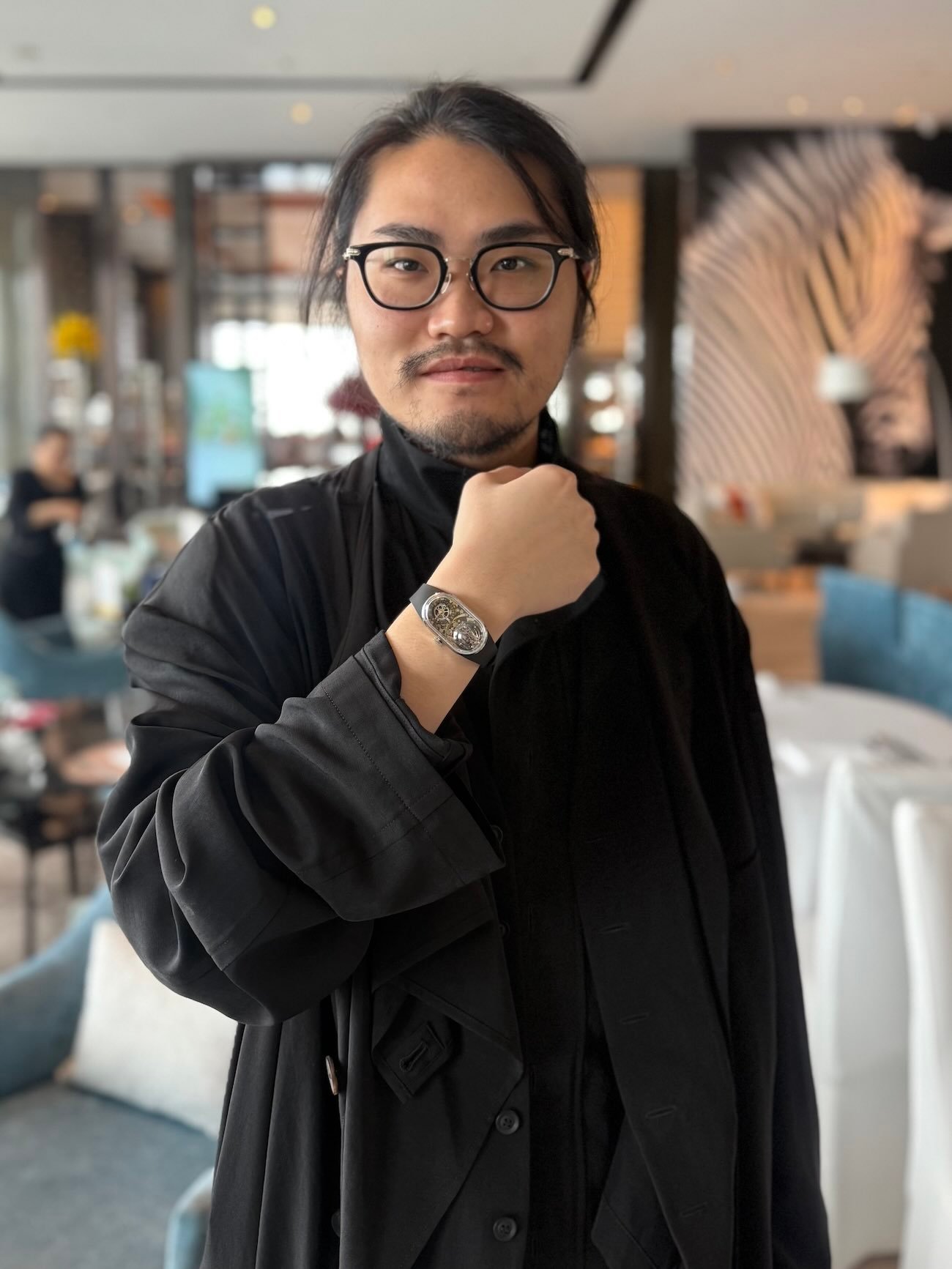
WineWhiskyWatches: What first inspired you to create a Chinese watch brand capable of standing alongside the best of Switzerland?
Dai: I think it began out of a certain fatigue. As a collector with more than fifty watches, I had reached a point where I felt aesthetic stagnation had set in. The market was saturated with predictable ideas. My background is in art. I studied in Italy, where I was deeply influenced by Art Deco and mechanical sculpture. I’ve always viewed mechanical movements as a form of kinetic art. I had no interest in my family’s business because it wasn’t creative. I needed to make something tangible that merged mechanics and aesthetics. If I weren’t designing watches, I’d be creating another kind of mechanical art. I eventually realised that the logical next step in my watch-collecting journey would be to create something with an aesthetic identity that would be entirely different from anything else. That’s when I began to imagine what I might design in a timepiece. Together with Lukas, I knew that we could bring that design to life without compromises.
WWW: What is Fam Al Hut’s founding mission?
Dai: For us, timekeeping is almost secondary. What we truly pursue is mechanical art. The goal isn’t simply precision, but poetry through engineering.
WWW: When you began, did you encounter scepticism from the international watch community? And how did you plan to overcome it?
Lukas: Everyone said it couldn’t be done. The assumption was that “haute horlogerie” was an exclusively Swiss domain. But Dai and I believed the opposite. We thought: why not create a Chinese brand that doesn’t imitate, but innovates …one that offers a new conceptual design, and uncompromising finishing to speak its own design language?
By the way, you were actually the very first to write about us [here] before our launch. Back then, we couldn’t have imagined how quickly collectors around the world would embrace our vision.
WWW: You’re attempting something that even seasoned Swiss watchmakers might hesitate to undertake. Why take on such a difficult path?
Lukas: Because it’s hard-and that’s exactly the point. As President Kennedy said in another context, we don’t do this because it is easy; we do it because it is hard. The challenge itself gives the work meaning. The struggle is what defines us. Difficulty is not an obstacle; it’s an opportunity.
WWW: What does success look like to you? Not from a sales perspective, but in terms of horological recognition?
Dai: To be recognised as different. That’s all. I never set out to build this brand expecting recognition – but I’m very grateful that collectors and critics are recognising the seriousness of what we’re doing.
WWW: How do you define Chinese luxury in the context of traditional Swiss watchmaking values?
Lukas: Chinese luxury is not about excess-it’s about refinement through balance. We respect traditional Swiss expertise in finishing and assembly, but we apply those traditional techniques in the context of a new aesthetic design language. The shapes, materials, and philosophies are contemporary, not nostalgic.
WWW: Is your design philosophy rooted more in Chinese culture or classical horology, or do you aim for a synthesis of both?
Dai: Both, very much so. The Möbius strip represents infinite continuity, an idea that resonates with Chinese philosophy. On the reverse side of our Möbius watch, the caseback design subtly echoes the gourd-shaped wine bottles carried by heroes in Chinese folklore. It’s a blend of East and West-eternal time expressed through modern mechanical art.
WWW: What emotions or experiences do you hope your watches evoke in their owners?
Lukas: Curiosity, first of all. Then wonder. And eventually, understanding that these watches were created by people who value innovation over imitation, and sincerity over marketing.
WWW: Walk us through your design process-from concept to prototype.
Dai: It begins with a concept sketch-usually very simple. Then we render the form digitally, refining proportions and visual balance. Once the overall structure is clear, we work closely with our watchmakers to produce multiple prototypes. Each prototype reveals new relationships between the dial, movement, and case, until visual harmony emerges in the final iteration.
Lukas: Dai and I both have a deep understanding of mechanical structures, and we’re supported by a team of brilliant engineers. This foundation has given rise to Fam al Hut’s distinctive spirit of innovation. We begin by defining the concept and the external design, and only then start to develop the movement around it. This approach stands in stark contrast to that of many Swiss brands, which typically start from the movement and adapt the exterior accordingly.
WWW: How important is the relationship between movement architecture and dial design for Fam Al Hut?
Dai: For us, it’s inseparable. The dial is the visible surface of the movement’s soul. Every mechanical form you see is part of a deliberate aesthetic structure.
WWW: What differentiates your dual-axis Tourbillon beyond the obvious aesthetic animation?
Dai: Our Tourbillon cage is inspired by the Möbius strip, representing an infinite loop. It’s made of a proprietary titanium alloy that reduces weight and increases stability. We chose titanium not just for performance, but for its sculptural lightness. The result is a kinetic object that appears to flow endlessly in motion.
WWW: How does Fam Al Hut prioritise chronometric performance, aesthetics, and innovation?
Dai: We rank them in this order: creativity, innovation, and then performance. Chronometric precision is essential, but in the world of haute horlogerie, it’s expected. True distinction comes from originality-the courage to create new mechanical art.
WWW: Can you point out any design details in the Möbius that might be easily overlooked but shouldn’t be?
Dai: Yes, the Tourbillon cage itself. Its geometry took inspiration from my studies in philosophy, particularly the concept of continuity and impermanence. It’s small, subtle, but it defines the entire identity of the piece.
WWW: What was the most technically challenging aspect of developing the Möbius?
Dai: Again, the Tourbillon cage. The titanium alloy was so light and elastic that achieving perfect concentric balance required rethinking our machining tolerances. The smallest vibration would distort the structure.
WWW: How much of the Möbius will be produced in-house?
Lukas: Everything except the hairspring and the sapphire crystal. Controlling fabrication allows us to achieve the precision and artistic consistency we demand. Independence is essential to our legitimacy.
WWW: How do you see the role of traditional craftsmanship evolving as new technologies like CNC micromachining become more advanced?
Lukas: Technology doesn’t replace craftsmanship; it refines it. Machines can cut within microns, but only a human can define what beautiful within a micron looks like. The future of haute horlogerie will depend on this partnership between precision and perception.
WWW: What’s your view on the role of storytelling and how it’s evolving in high-end watchmaking?
Dai: It’s essential. Luxury today is not just material, it’s narrative. The story of the Möbius symbolises our philosophy: a commitment to personal taste without any commercial guarantee that others will share it. That’s what makes it meaningful.
WWW: What kind of collector do you envision wearing your watches?
Dai: A collector who values originality, who has perhaps grown tired of repetition in Swiss design language. Someone who looks for ideas, not just logos.
WWW: How will you balance exclusivity with growth as your reputation grows and demand expands?
Lukas: We intend to remain small. We’ll produce fewer than a few hundred pieces a year. We are expanding production gradually with help from partners who understand our technical ambitions. Distribution will be a mix of direct sales and a few carefully chosen retailers across Europe, Asia, and North America.
WWW: Are there any particular complications or materials that you’re eager to explore next?
Dai: A super-thin Tourbillon is in development. We’ll also be the first brand to offer an Amorphous Zirconium case, beginning with the Möbius. We have other ambitious projects we’re exploring, but it’s too soon to speak of them. Each project is about reinterpreting tradition through new physics and form.
WWW: In ten years’ time, what legacy do you hope your brand will have secured in horological history?
Lukas: That we proved something was possible; that Chinese haute horlogerie can be independent, artistic, and credible at the highest level. We hope future collectors will not categorise us by geography, but by philosophy: a pursuit of beauty through mechanical truth.
WWW: Thank you for your hospitality and for all of the access and insight that you’ve provided.
Dai: Thank you! One of the most satisfying aspects of this undertaking is the new friendships that Lukas and I continue to develop in the collector community.
Lukas: We really appreciate that aspect. Who could have predicted that when you were presented with our prototype, just days after it was first produced, that you would become a valued friend? All of our new relationships around the world, with passionate people of varied backgrounds, validate our efforts and motivate us to reach even higher in the future.
For more details, please consult www.famalhut.com.



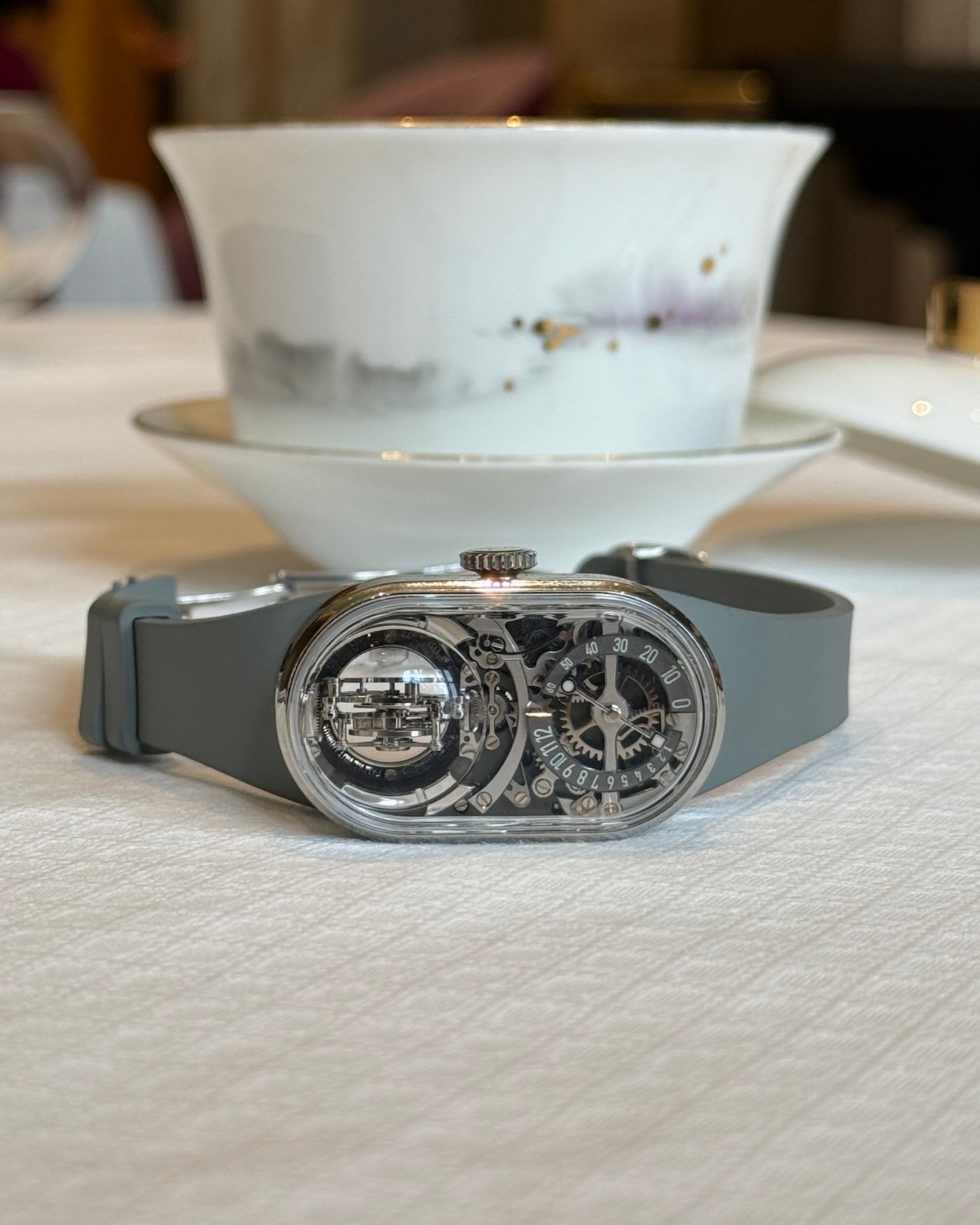





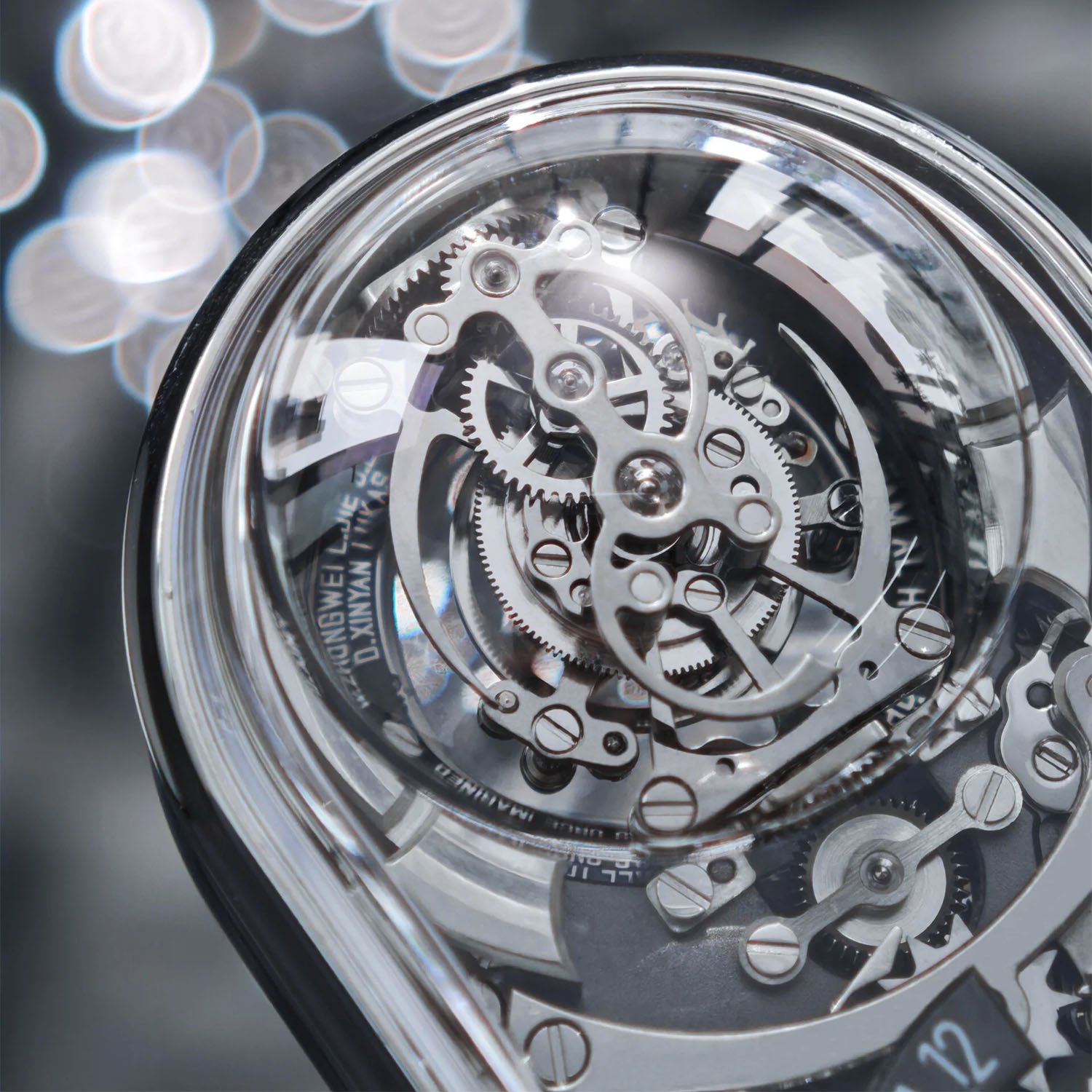
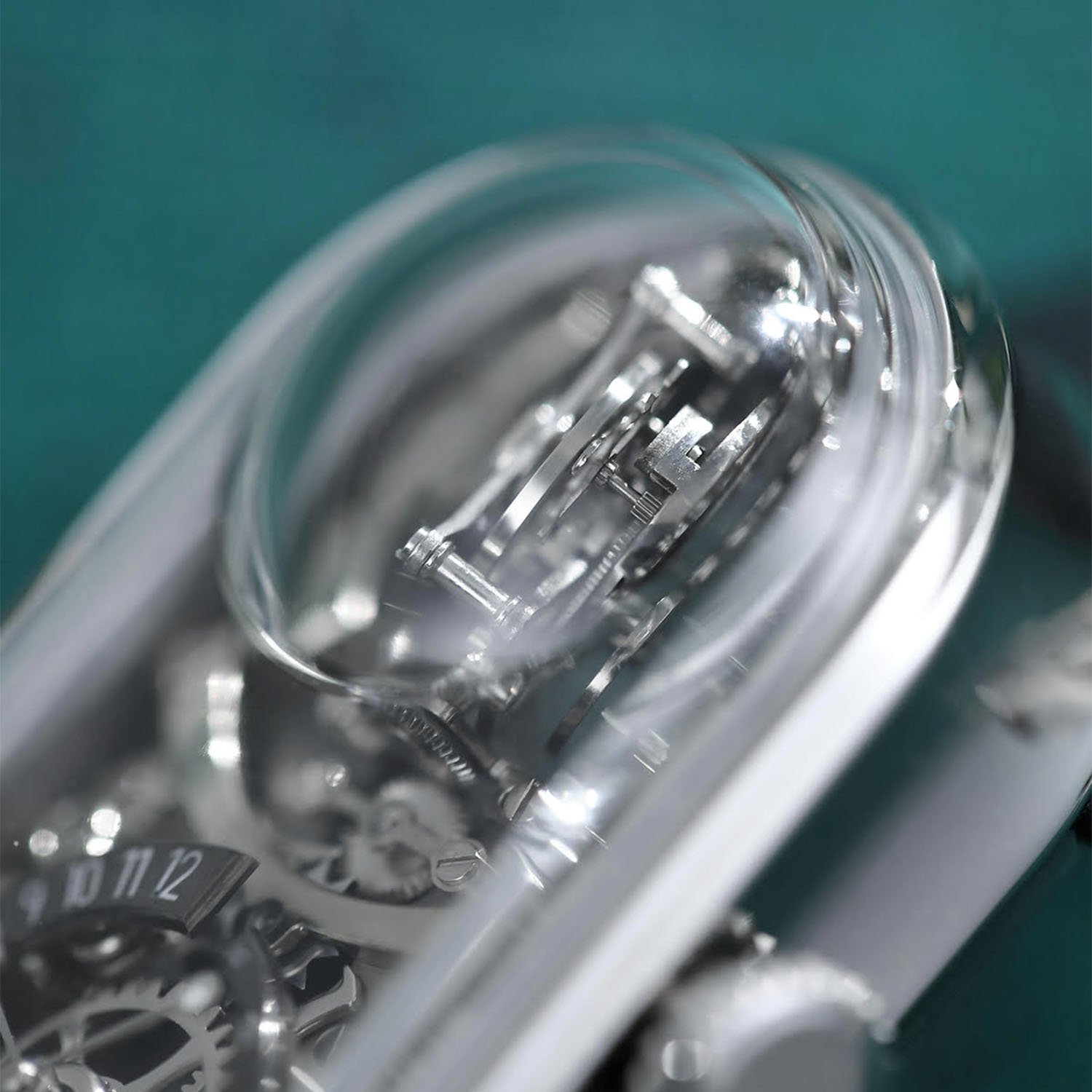




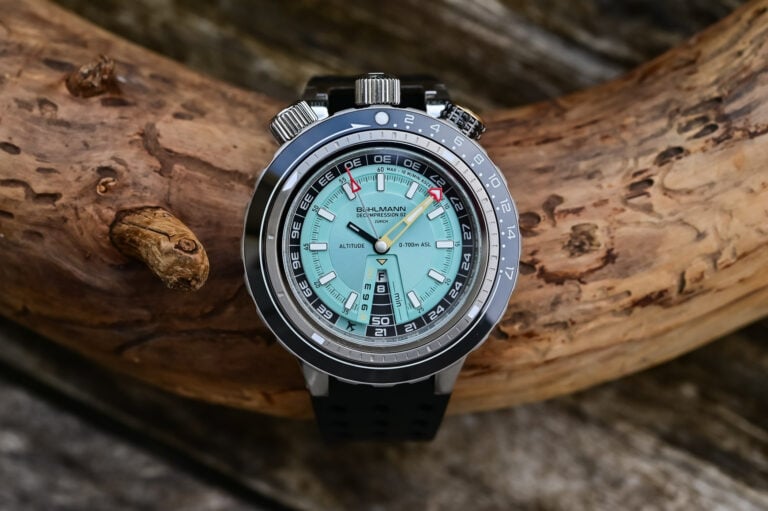
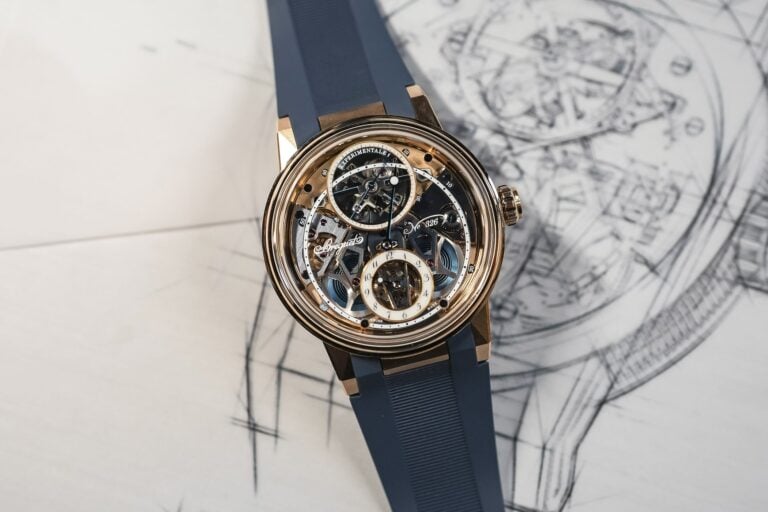
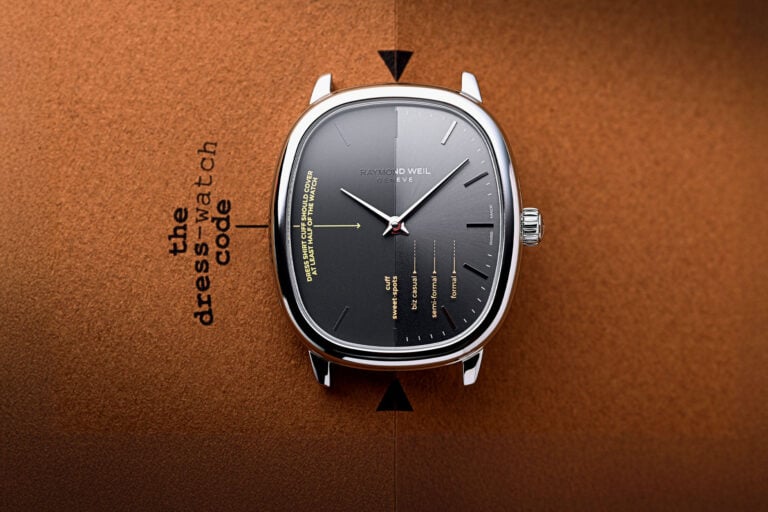
1 response
Leaving aside all justified admiration for the creators of the extremely innovative Famalhut watch, it’s plain, parts bin looking crown seemingly does not belong on this very special watch.
It’s too plain and the knurled edges surely don’t signify any Art Deco influence?
It surely deserves at least a brand logo or some decoration!
Whether it needed to be designed this way I don’t know…. ?
Keep up the good work,
Rick C.